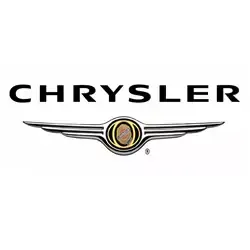Chrysler PT Cruiser Tire Pressure
Most common recommended tire pressure for Chrysler PT Cruiser can range from 32 psi to 38 psi depending on year of production, trim and OEM tire size, but it maybe different for older models. It is imperative to confirm the exact tire inflation for your Chrysler PT Cruiser to ensure safety on the road. Always refer to your vehicle owner's manual for the correct tire pressure designated by vehicle's manufacturer.
Select your Chrysler PT Cruiser production year to see its recommended tire inflation.
| Model Year | Front Tires | Rear Tires |
|---|---|---|
| 2010 Chrysler PT Cruiser | 35 psi | 35 psi |
| 2009 Chrysler PT Cruiser | 32 - 35 psi | 32 - 35 psi |
| 2008 Chrysler PT Cruiser | 32 - 35 psi | 32 - 35 psi |
| 2007 Chrysler PT Cruiser | 32 - 38 psi | 32 - 38 psi |
Recommended Tire Pressure for Chrysler PT Cruiser
Maintaining the recommended tire pressure for a Chrysler PT Cruiser is crucial for several reasons, impacting safety, fuel efficiency, and the longevity of the tires themselves. Properly inflated tires ensure optimal contact with the road, significantly enhancing vehicle stability and handling, which is especially important in adverse weather conditions or during emergency maneuvers, thereby reducing the risk of accidents. Moreover, tires inflated to the manufacturer's recommended levels exhibit reduced rolling resistance, meaning the engine doesn't have to work as hard to move the vehicle forward, leading to better fuel efficiency. This not only saves money on gas but also contributes to lower emissions, making it beneficial for the environment. Additionally, tires at the correct pressure wear more evenly and slowly, extending their usable life and preventing premature replacement, which can be costly. For the Chrysler PT Cruiser, adhering to the specified tire pressure is essential to harness these benefits, ensuring the vehicle performs safely and efficiently while minimizing expenses and environmental impact over time.

All listed guides, data and/or calculations are for informational purposes only. TirePressure.com does not warrant or make any representations regarding the accuracy of or the results of the use of this information. Always refer to vehicle owner's manual for the correct tire pressure configuration.